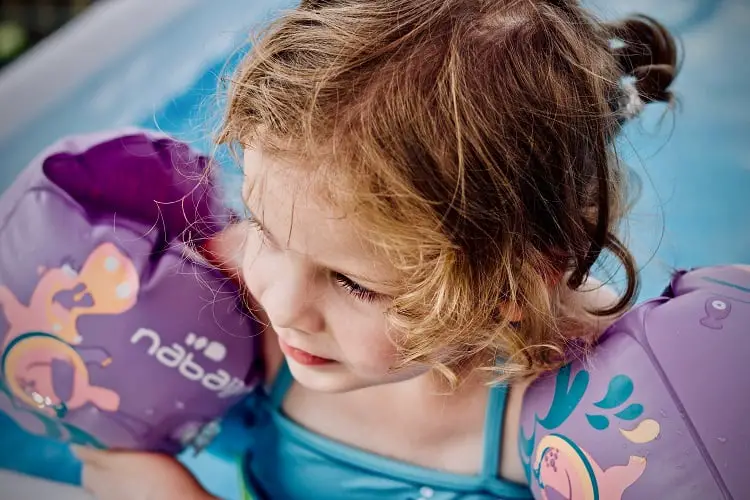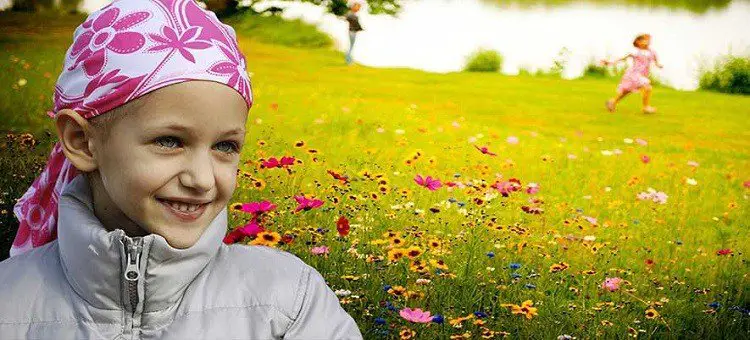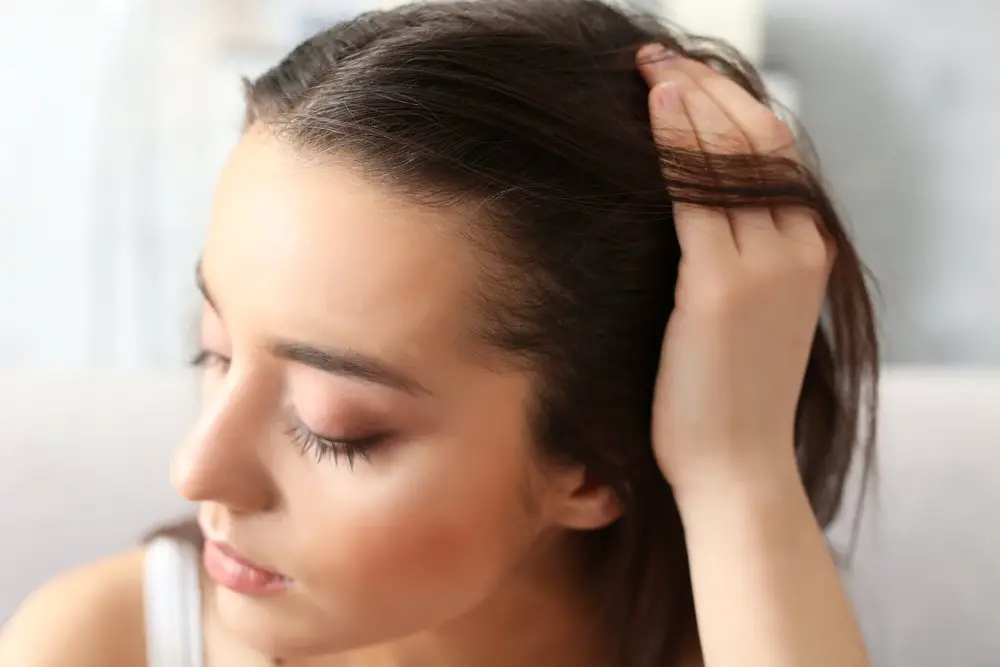
Page Contents
If you think Hair loss is just a problem for adults, think again. Complex as it may seem, Hair loss in children can be terrifying, whether they have bald spots or thin hair.
According to research, hair loss in toddlers is responsible for about 3% of pediatric office visits in the United States.
Whether your child has distinct bald spots or thinning hair, the loss of hair can be terrifying. But the good news is that, with appropriate diagnosis, most hair loss cases in children can be treated successfully.
Although, many of the causes of children’s hair loss aren’t life-threatening. Yet, losing hair as a kid can take a toll on emotional well-being. It’s challenging enough to experience baldness when you’re an adult.
Because hair loss may have a tremendous psychological effect on kids, it’s of utmost importance to consult a doctor for treatment.
But before a solution to fighting Hair loss can be proffered, it is paramount to identify the common types of hair loss in children and ways to tackle them.
Hair Loss In Children | What Can Cause Hair Loss in A Child?

An infection or other scalp-related problems often cause hair loss in toddlers. Here are some of the most common medical causes of hair loss in children.
1. Tinea Capitis
Tinea (also known as ringworm) is a contagious fungal infection with patchy signs of bald spots, with red, flaky scaling (where the hair has broken off, there could also be black dots).
This scalp infection spreads when children share personal items like hats and combs. Other possible symptoms of Tinea Capitis are fever and swollen glands.
Ideally, a dermatologist can diagnose tinea capitis by inspecting your child’s scalp. The doctor will sometimes scrape off a little piece of the infected skin and send it to a laboratory to fully confirm the diagnosis.
This fungal infection can be treated with an antifungal drug taken by mouth for a period of about 8-weeks. Most importantly, using an antifungal shampoo alongside oral medication will prevent your kid from spreading the virus to other children.
Finally, remember that Tinea Capitis is very contagious; therefore, do not share any objects that touch the child’s head with other kids.
2. Trichotillomania
Trichotillomania happens when irregular hair patches fall out due to excessive twirls, pulling, plucking, twisting, or rubbing of the hair by the kid.
The hair loss is patchy and is characterized by broken hairs of different lengths. In this case, the patches are seen on the side of the kid’s dominant hand.
But what are the causes of trichotillomania?
Trichotillomania may come from anxiety or a stressor in your child’s life at home, such as the birth of a sibling, loss of a grandparent, a school stressor, or a divorce.
Mind you that scolding will not likely be helpful if you see your child pulling their hair. However, proper counseling to help your child fight the source of anxiety or stress that triggered the habit may be the best solution.
Additionally, another condition called traction alopecia comes from physical damage from hairstyles – for example, ponytails or braids that are too tight, leading to hair loss at the hairline. It may come with inflamed follicles at the irritation area.
3. Alopecia Areata

This describes a condition where your child has smooth, round, completely bald areas.
This results from an attack on the hair follicles by the immune system, thus stunting hair growth. This type of hair loss occurs in a few days, and the bald patterns are not inflamed but smooth.
Furthermore, alopecia areata is thought to happen when the immune system mistakenly attacks her hair follicles. However, this hair condition is somewhat rare, affecting about 1 in every 1,000 children at a given time.
Alopecia areata has no specific test; it is diagnosed after the scalp is examined correctly and ruled out by other conditions.
Unfortunately, Alopecia areata is incurable, but dermatologists can promote hair growth with the help of medications.
In some cases, alopecia in children will go on until every hair on a child’s head falls out.
4. Telogen effluvium
Telogen is the part of the normal human hair growth cycle when the hairs stop growing and are in the resting phase. Then, old hairs fall out to let new ones grow. Normally, according to the American Hair Loss:
In children suffering from telogen effluvium, a lot of hair follicles transition into the telogen phase than usual. So rather than losing 100 hairs per day like normal, children lose about 300 hairs per day.
Although, the hair loss may not be very noticeable; or there may be some bald patches on the scalp.
Moreover, telogen effluvium usually occurs after an extreme event, such as:
- Surgery
- Extreme high fever
- Severe injury
- Strong emotional trauma like the death of a loved one
When the event has passed, the kid’s hair should start to grow back – and complete regrowth will usually take 6-months to a year.
5. Nutritional Deficiency
Biotin or vitamin H is one of the B complexes of vitamins that help convert carbohydrates into glucose to fuel the body.
Zinc is a vital mineral involved in several aspects of cellular metabolism. It equally stimulates average growth and development in pregnancy, childhood, and adolescence.
In a few cases, hair loss in children can also be a symptom of too much vitamin A.
The good thing is that with a healthy, varied diet, most children will not suffer from nutritional deficiencies that result in hair loss.
However, endeavor to speak to your child’s doctor if you suspect a problem before giving them nutritional supplements.
6. Chemotherapy
It’s a known factor that children involved in chemotherapy treatment will lose their hair. Chemotherapy is a powerful medication that kills rapidly dividing cells in the body and includes hair roots.
However, once the treatment is completed, your child’s hair should be able to grow back.
7. Endocrine Problems
The cause of hair loss in some children is hypothyroidism; this is typically a condition in which the thyroid is not very active and produces an insufficient amount of thyroid hormones needed for metabolism regulation.
A blood test makes hypothyroidism diagnosis – and treatment may involve the medication prescribed by the endocrinologist to replace incomplete hormones. Still, it will depend on several factors such as:
- The extent of the disease
- Your kid’s age, medical history, and overall health
- Expectations for the course of the disease
- Your kid’s tolerance for specific medications, procedures, or therapies
- Your opinion or preference
Nonmedical Causes of Hair Loss in Toddlers

1. Rubbing: Between the ages of 3 to 6 months, many babies have a bald spot resulting from friction with the car seat or crib mattress. Any stray hair should return the moment your child starts sitting up.
2. Newborn hair loss: Many newborn babies lose their hair during their first few months of life, after which the baby’s hair will be replaced by permanent hair.
3. Hair abuse: Strong brushing or pulling the hair into tight pony braids or tails can make it fall out. Therefore, being gentler with the hair will let it grow back.
Also read: Can Antibiotics Cause Hair Loss: What Medications Can Cause Hair Loss?
A Few Alopecia Children Pictures
Below are some alopecia children pictures, so you’ll see how it look on kids:

And even more hair loss children pictures below:

Standard Treatment of Hair Loss in Children
Bearing in mind that children’s hair is more refined and more delicate than adults, it is essential to note that if your child’s hair loss type does not fall into any of the categories listed above, your child’s doctor should be consulted for medical treatment.
This is because the plagues above can be solved by an evaluation from a dermatologist and proper treatment or prescription of antifungal or oral medication from the doctor.
The following methods, if followed religiously, will surely bring back the rich, thick hair of your little one.
1. Wash hair with shampoo
Washing your kid’s hair prevents loss of hair and cleanses the hair and scalp. Fix a good washing regime for the hair that does not involve washing every day as shampoo strips hair of its natural oil.
2. Determine suitable shampoo for hair type
Getting a mild shampoo for your child’s delicate hair will lead to having healthy hair.
So carefully find that which suits the hair. Check the ingredients to know if it’s mild or not, and avoid anything with sulfate, parabens, and sulfonate.
3. Use a good hairbrush
How you brush the hair determines its condition. Make use of soft brushes from natural fibers.
Be as gentle as you can be, and try not to pull too hard. While brushing, brush from the underside out, not from the top down. One more thing, use a comb on wet hair.
4. Eat right
It is strongly advisable to feed kids with a healthy balanced diet as one filled with vegetables and fruits containing minerals and the B vitamins will slow hair loss compared to an unhealthy one.
Stay away from food additives as they hurt hair loss. Ensure enough omega-3 fatty acid (which keeps hair healthy and prevents dry and thin hair), protein (for long hair), and plenty of iron is embedded in their diet.
Sources of omega-3 include pumpkin seeds and walnut. Seafood, yogurt, eggs, and beans for protein. Vegetables such as spinach, kale, and fish are sources of iron.
5. Scalp Massage
Massaging the scalp with a nourishing oil (coconut or almond oil) will increase blood supply to the skin’s surface on the head and hair follicles. A scalp massage also relaxes the body and improves overall function.
6. Visit the doctor
Hair loss in children may be a sign or symptom of a severe medical issue; therefore, visit the doctor as soon as possible. Talk with your child’s doctor if the hair loss is unusual or rapid.
Talk To Your Child About Hair Loss Today

Image source: hairlosstalk.com
Losing hair can be very distressing for anyone. But it can be incredibly upsetting for a child.
Therefore, you need to adequately explain to your child why the hair loss occurred and what plans you have to fix it. If it results from a treatable disease, let them know that their hair will eventually grow back.
But if the hair loss is irreversible, a device some to cover the hair loss. Some of the things you might try include:
- Putting on wig
- Wearing a hat
- Trying new hairstyle
- Using a scarf (as shown in the image above)
Apart from that, you can also get help managing your child’s hair loss from their pediatrician and also from a hairstylist that’s professionally trained to work with children who have lost their hair.
If you need help purchasing a wig, contact an organization such as Wigs for Kids or Locks of Love help.
Finally, counseling can equally help children cope with hair loss. Ask your pediatrician to recommend a therapist or a counselor who can help talk your kid through the experience.
Conclusion
If your child has any of the conditions mentioned above, then know that it is an emotionally challenging time for them. Apart from losing self-confidence, they are often bullied or ridiculed because of their thinning hair or baldness.
Get immediate treatment – don’t overlook the emotional and psychological aspects – acknowledge their feelings – and help them work through difficult emotions. With prompt intervention and treatment, your kid will have a good reason to smile once again!
Finally, there are several reasons for hair loss in toddlers, as you can see above. But if you suspect any medical-related problem or have any concerns about hair loss, it’s crucial to consult your child’s pediatrician.
Natural Alternative Supplement







[…] Areata is something that affects either young adults or children alike. The sudden onset of hair loss is […]
[…] of the major things we sometimes fear in life are losing our hair and growing old. Hair loss occurs regardless of age as people who are either 60 or 30 could suffer […]